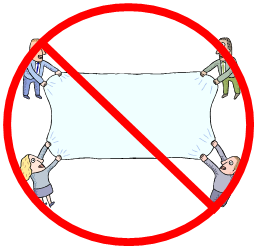Now you may have thought from my last post when I railed about the often ineffectiveness of the ubiquitous five point evaluation scale that I favored a GE-style three tier system. Not at all. Interestingly, many of the comments I received talked about how some organizations have done away with numeric scales entirely and use descriptive phrases. Not once in my last post did I mention using a numeric scale, and I agree that applying seemingly arbitrary numbers does more harm than good. But don’t fool yourself. Using adjectives from “superior” or “outstanding” down to “unacceptable” or “unsatisfactory” is the same as telling someone that they’re a 1 or a 5. Everyone correlates those words to a number. They can’t help themselves. The inefficiency of some appraisal phrasing is the topic for another time, right now I want to share the evaluation framework I advocate.
No safety net. Four levels of performance. And no flowery language either. The effective way to communicate performance feedback to your employees is to set standards for acceptable performance and then measure them compared to those standards. The top level of performance is “Exceeds Standards”. The next is “Meets Standards”. Then “Partially Meets Standards”, and finally “Does Not Meet Standards”. Two levels above the line and two below. No middle ground, no safety net. Just a clear statement of either you made it or you didn’t.
I’ve heard people within organizations say this is harsh, this isn’t fair to the employees and I disagree. The employees I’ve spoken with make it quite clear that they want to know where they stand. My brother in sales management says he always tells his new employees that “No” is the second best answer. Because then you know where you stand. Your employees are the same. They want to know and it’s often because they want to improve.
A key objective of a manager’s job is to manage the performance of the team. Setting clear, measurable goals and then communicating with employees about how they’re doing on meeting those goals are two crucial roles in meeting the manager’s goal.


